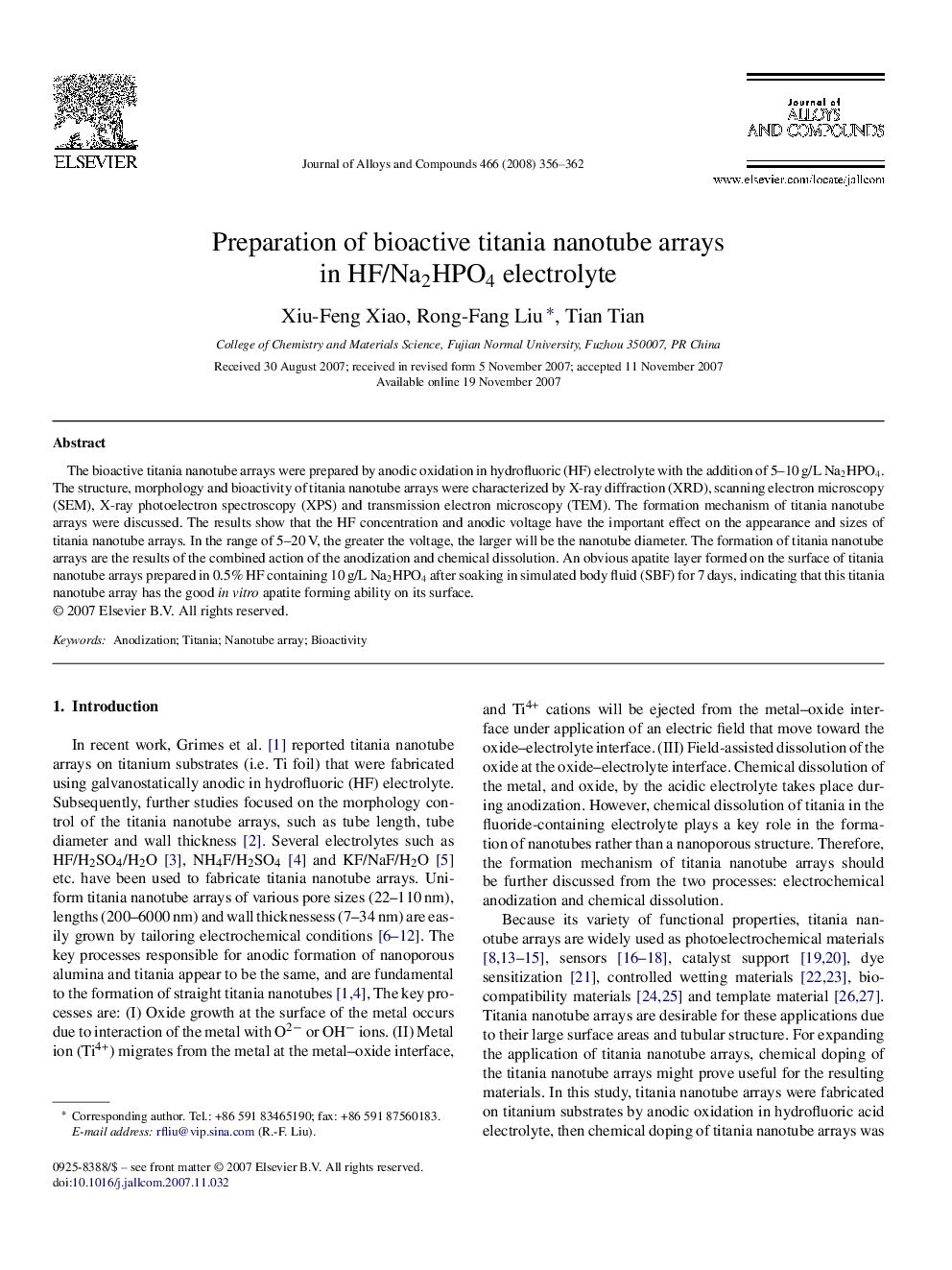| Article ID | Journal | Published Year | Pages | File Type |
|---|---|---|---|---|
| 1623590 | Journal of Alloys and Compounds | 2008 | 7 Pages |
The bioactive titania nanotube arrays were prepared by anodic oxidation in hydrofluoric (HF) electrolyte with the addition of 5–10 g/L Na2HPO4. The structure, morphology and bioactivity of titania nanotube arrays were characterized by X-ray diffraction (XRD), scanning electron microscopy (SEM), X-ray photoelectron spectroscopy (XPS) and transmission electron microscopy (TEM). The formation mechanism of titania nanotube arrays were discussed. The results show that the HF concentration and anodic voltage have the important effect on the appearance and sizes of titania nanotube arrays. In the range of 5–20 V, the greater the voltage, the larger will be the nanotube diameter. The formation of titania nanotube arrays are the results of the combined action of the anodization and chemical dissolution. An obvious apatite layer formed on the surface of titania nanotube arrays prepared in 0.5% HF containing 10 g/L Na2HPO4 after soaking in simulated body fluid (SBF) for 7 days, indicating that this titania nanotube array has the good in vitro apatite forming ability on its surface.
